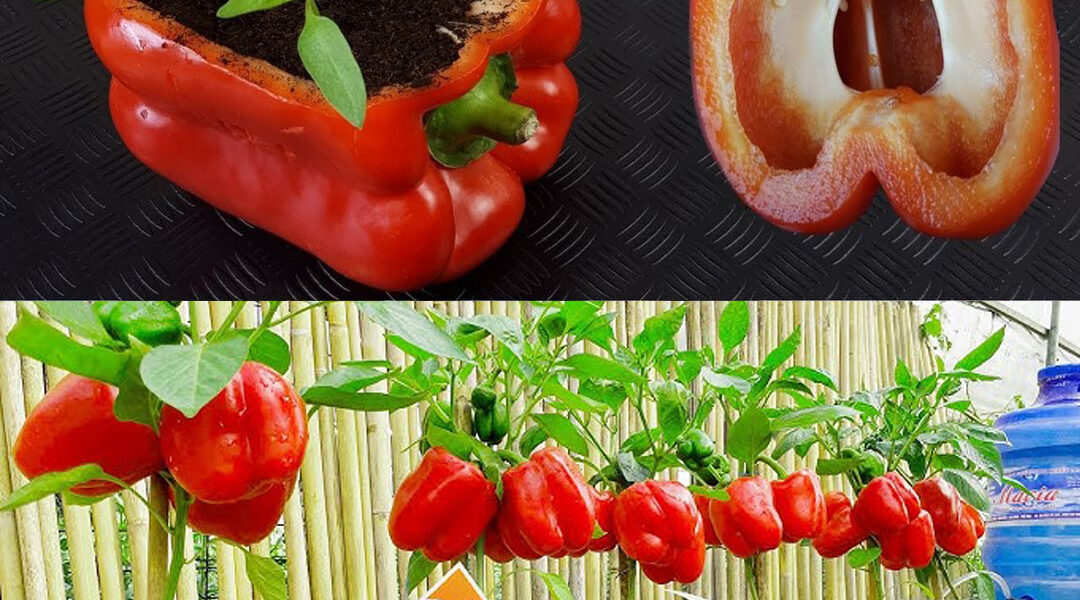How to Grow Peppers at Home: The Secret to Abundant Production
Peppers are delicious and versatile vegetables that can be successfully grown at home. Whether you have a garden, a balcony or even a sunny window, you can enjoy a bountiful production of tasty peppers. In this article, we will reveal the secret to growing peppers at home and getting generous harvests.
1. Choose pepper varieties
The first step to having a bountiful production of peppers is choosing the right varieties. Peppers come in a variety of colors, sizes, and flavors. Some varieties are better suited to indoor growing, while others thrive better outdoors. The most common varieties are red, green, and yellow peppers, but there are also purple, orange, and even chili peppers. Be sure to choose varieties that are suited to your growing environment.
2. Preparation of the soil or substrate
Whether you are growing your peppers in the ground or in pots, soil or growing medium preparation is essential. Peppers prefer well-drained soil that is rich in organic matter. You can improve soil fertility by adding compost or organic fertilizer. Make sure the soil pH is slightly acidic, around 6.0 to 6.8.
If you are growing peppers in pots, choose a quality potting soil with good drainage. Pots should also have drainage holes to prevent excess water.
3. The ideal location
Peppers need plenty of sunlight to thrive. They prefer a sunny location with at least 6 to 8 hours of direct light per day. If you’re growing them indoors, place them near a south-facing window or use grow lights to compensate for the lack of natural light.
4. Planting peppers
Peppers can be planted from seeds or transplants. If starting from seeds, sow them indoors about 8 to 10 weeks before the last expected frost. Transplant the plants into the ground or pots when all danger of frost has passed.
When planting, space peppers about 18 to 24 inches apart to allow for optimal growth. Water thoroughly after planting to establish roots.
5. Pepper Care
To achieve abundant pepper production, it is essential to take care of your plants. Here are some key tips:
- Watering: Water peppers regularly, making sure to keep the soil evenly moist. Avoid overwatering, as this can lead to root rot.
- Fertilization: Peppers are nutrient-hungry. Use a balanced fertilizer rich in nitrogen, phosphorus, and potassium to promote healthy growth and fruit production.
- Pruning: Remove yellow or damaged leaves to promote air circulation and prevent disease. You can also pinch back stems to encourage branching.
- Support: Peppers can become top heavy as the fruit ripens. Use stakes to support the plants and prevent branches from breaking.
6. Harvesting peppers
Peppers are ready to harvest when they are fully ripe. Color varies depending on the variety, but generally, peppers are ready to pick when they are firm and brightly colored. Use scissors or a knife to cut them from the plant, leaving a small piece of stem attached.
6. The secret to abundant production
The secret to having a bountiful pepper crop is patience and consistency. Take care of your plants throughout their life cycle. By providing adequate nutrition, ensuring proper watering, and protecting them from pests and diseases, you will be rewarded with an abundance of fresh, tasty peppers.
In conclusion, growing peppers at home and getting a bountiful crop is not difficult if you follow the proper steps and tips. By choosing the right varieties, preparing quality soil, providing good lighting, and taking care of your plants, you will be able to enjoy your own fresh peppers throughout the growing season. Enjoy this rewarding gardening experience and savor the delicious fruits of your labor.
